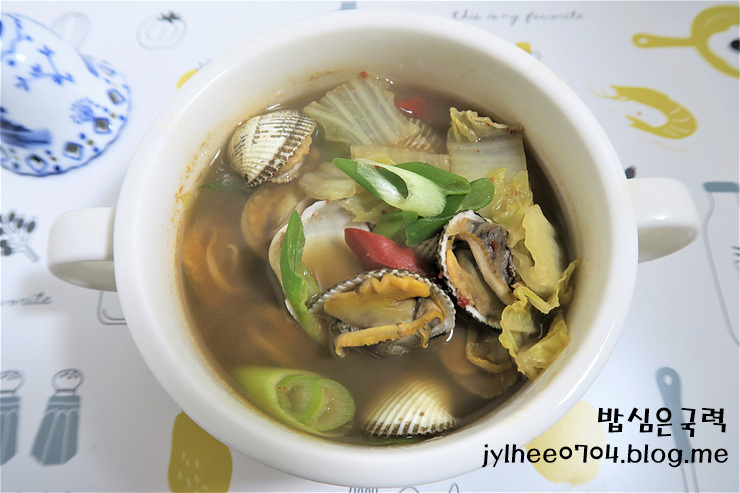
Cockle soup
Cockle is the most delicious from November to March of the following year. It contains high-quality proteins, vitamins, and essential amino acids, which help children grow, and is known to be effective in preventing anemia, recovering from fatigue, relieving hangovers, and preventing fatty liver. In Donguibogam, cockles protect organs, help digestion, and replenish energy, and cockle shells are said to be effective in removing walls. It is better to keep cockles clear and clean without breaking their shells, and when storing them, you can store them longer by blanching them and applying only flesh to the freezer. I'm going to make delicious and chewy cockle soup today.
4 serving
Within 60 minutes

밥심은국력
- Ingredients
-
-
cockle1kg
-
full cabbage3piece
-
leek1/2ea
-
Cheongyang red pepper1ea
-
Red pepper1ea
-
Water1400ml
-
Cheongju2TS
-
Soybean paste1TS
-
Fish sauce with sand lance extract2TS
-
Shiitake mushroom powder1TS
-
Red pepper powder1TS
-
- Cooking Steps
-
STEP 1/14Prepare 1kg of cockles.
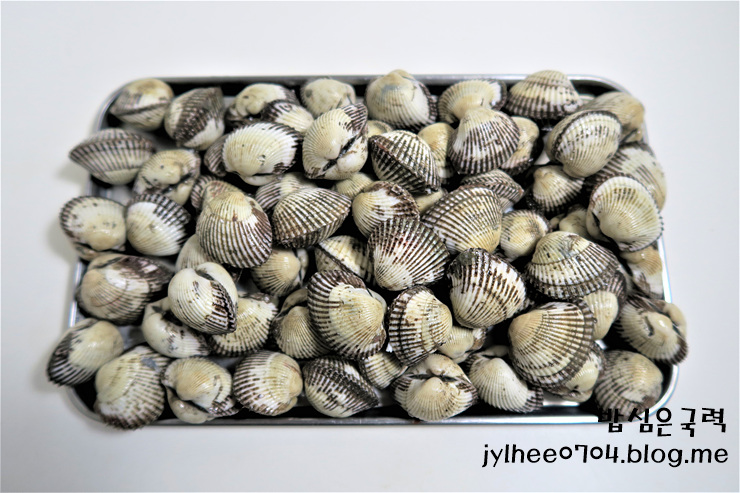 STEP 2/14I'll cut the cabbage. Cut the cheongyang red pepper, red pepper, and green onion diagonally. It's okay to put dried radish greens instead of cabbage.
STEP 2/14I'll cut the cabbage. Cut the cheongyang red pepper, red pepper, and green onion diagonally. It's okay to put dried radish greens instead of cabbage.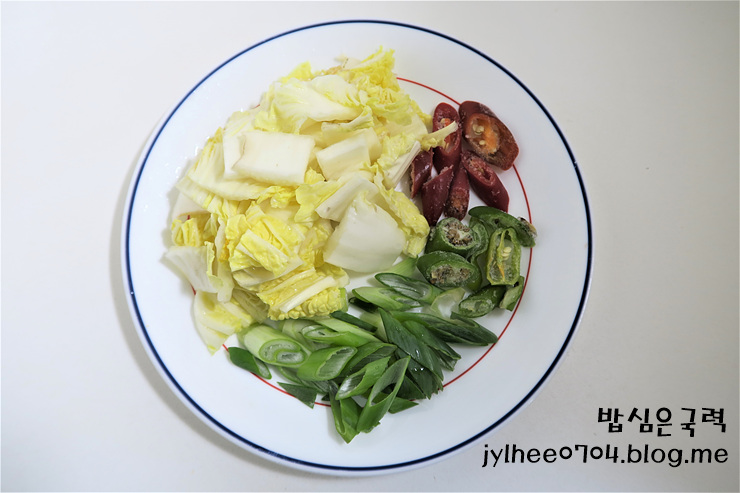 STEP 3/14Add 2 tablespoons of thick salt, add cold water, and wash cockles as they collide. I'm going to eat the soup with cockle soup, so wash it until clear water comes out.
STEP 3/14Add 2 tablespoons of thick salt, add cold water, and wash cockles as they collide. I'm going to eat the soup with cockle soup, so wash it until clear water comes out. STEP 4/14Put 1400ml of water in a pot and add cockles just before boiling. An important tip is to add cockles before the water boils. That way, the cockles won't get tough and blanch them well.
STEP 4/14Put 1400ml of water in a pot and add cockles just before boiling. An important tip is to add cockles before the water boils. That way, the cockles won't get tough and blanch them well.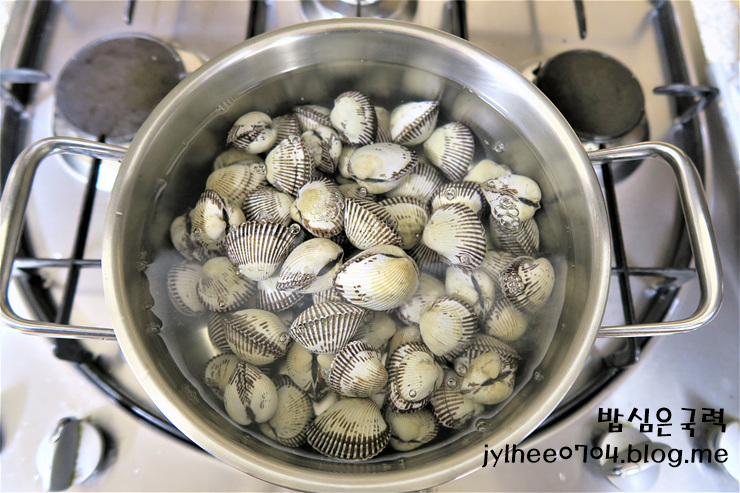 STEP 5/14Stir cockles in one direction for 2-3 minutes. That way, the cockle sticks to one side and it's easy to peel.
STEP 5/14Stir cockles in one direction for 2-3 minutes. That way, the cockle sticks to one side and it's easy to peel.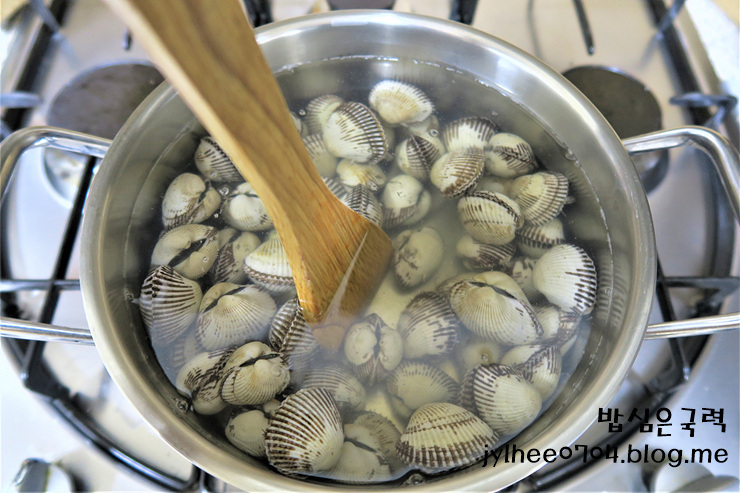 STEP 6/14If you open your mouth like 2 or 3 cockles, take them out.
STEP 6/14If you open your mouth like 2 or 3 cockles, take them out.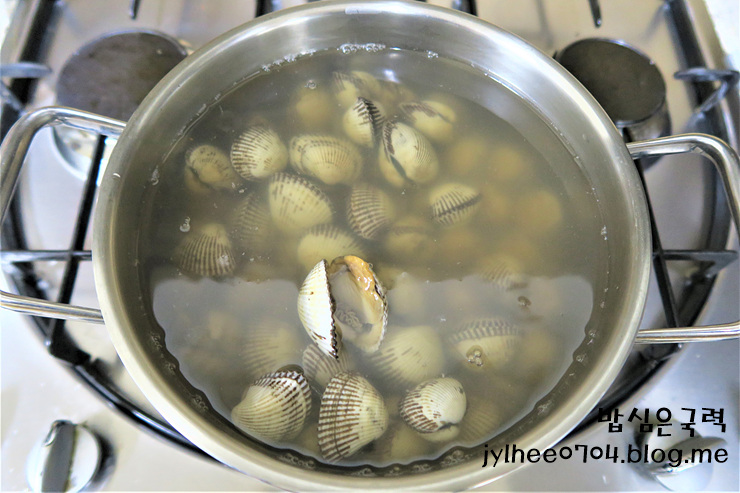 STEP 7/14When peeling cockles, twist the back of cockles with a spoon or use a cockle peeler.
STEP 7/14When peeling cockles, twist the back of cockles with a spoon or use a cockle peeler. STEP 8/14The cockles are really thick, right? Blanching well is the know-how.
STEP 8/14The cockles are really thick, right? Blanching well is the know-how.
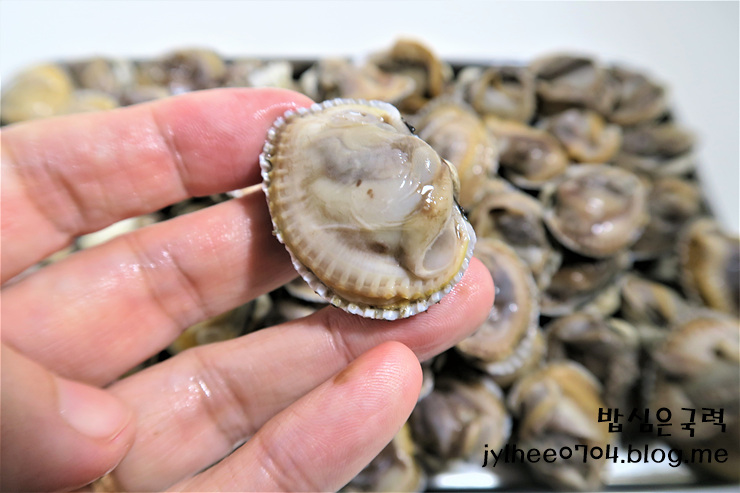 STEP 9/14Add 2 tablespoons of refined rice wine to the cockle-boiled water.
STEP 9/14Add 2 tablespoons of refined rice wine to the cockle-boiled water. STEP 10/14Filter the blanched water on a fine net or cloth.
STEP 10/14Filter the blanched water on a fine net or cloth. STEP 11/14Pour the salted cockle water back into the pot and add the cabbage when it starts to boil, and add 1 tablespoon of soybean paste when the cabbage is half-cooked
STEP 11/14Pour the salted cockle water back into the pot and add the cabbage when it starts to boil, and add 1 tablespoon of soybean paste when the cabbage is half-cooked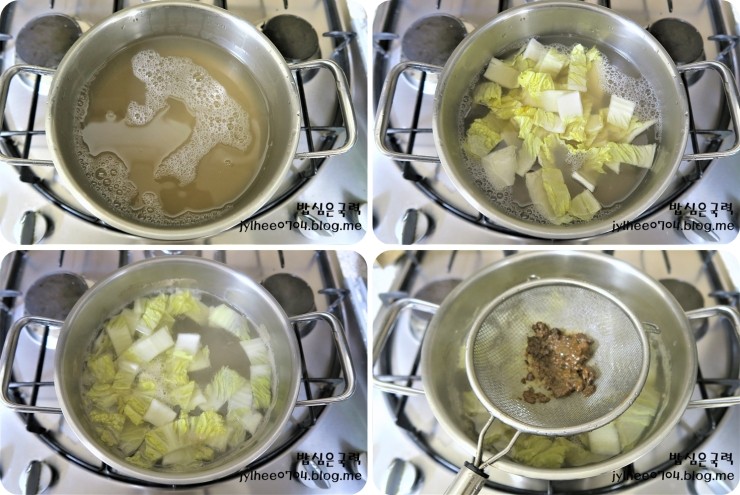 STEP 12/14Add 2 tablespoons of sand lance extract and 1 tablespoon of shiitake powder. Sand lance extract brings out the savory taste. You can add anchovy sauce or tuna sauce. It's delicious even if you don't use anchovy kelp stock separately.
STEP 12/14Add 2 tablespoons of sand lance extract and 1 tablespoon of shiitake powder. Sand lance extract brings out the savory taste. You can add anchovy sauce or tuna sauce. It's delicious even if you don't use anchovy kelp stock separately.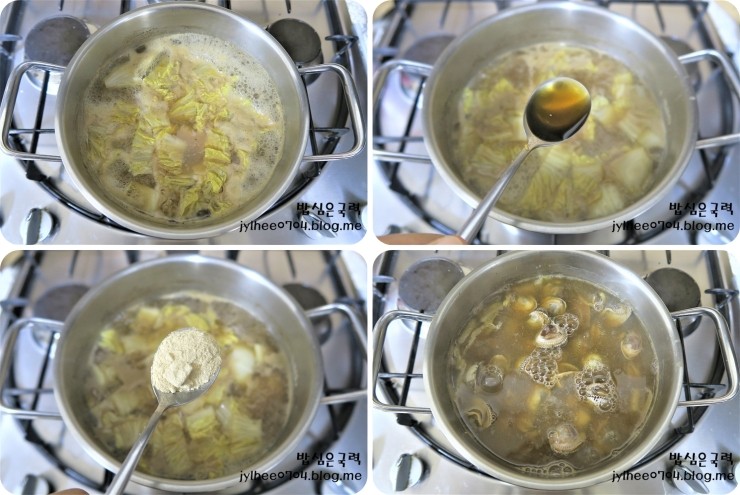 STEP 13/14Add 1 tablespoon of red pepper powder. Finish by adding green onions, cheongyang red pepper, red pepper, etc.
STEP 13/14Add 1 tablespoon of red pepper powder. Finish by adding green onions, cheongyang red pepper, red pepper, etc.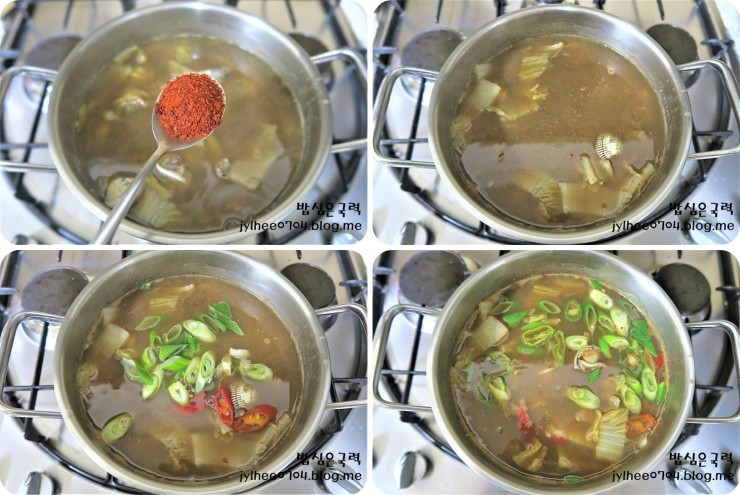 STEP 14/14Please remove the foam.
STEP 14/14Please remove the foam.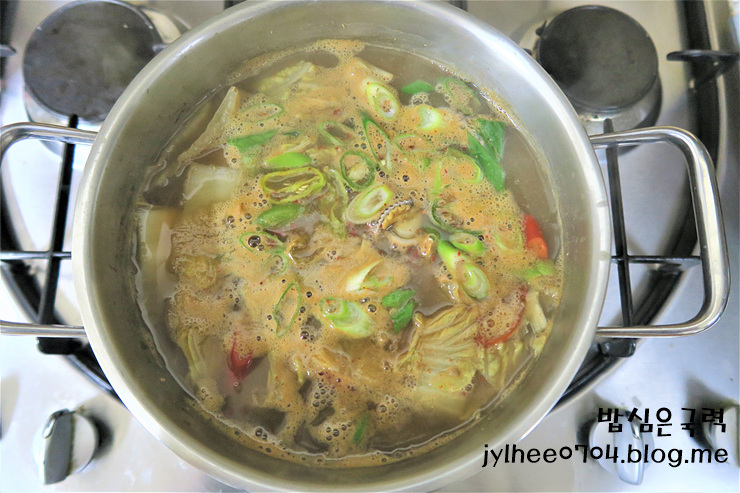
- Cooking review
-
5.00score
-
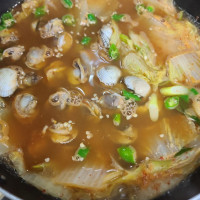 819*****scoreIt's my first time making it, and the soup is refreshing and delicious.2021-02-12 00:16
819*****scoreIt's my first time making it, and the soup is refreshing and delicious.2021-02-12 00:16
-
- Japchae Recommended recipe
-
-
1
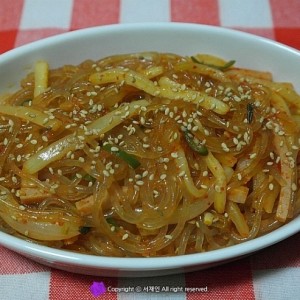 [Noodle dish] Spicy. "Kimchi Japchae"4.96(48)
[Noodle dish] Spicy. "Kimchi Japchae"4.96(48) -
2
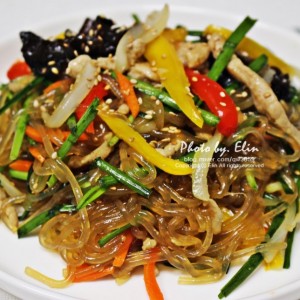 This is the golden recipe for japchae4.79(1001)
This is the golden recipe for japchae4.79(1001) -
3
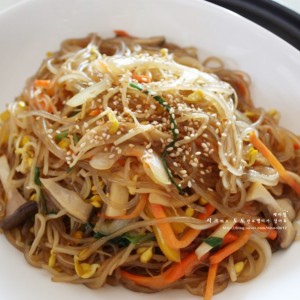 How to make bean sprout japchae4.97(29)
How to make bean sprout japchae4.97(29) -
4
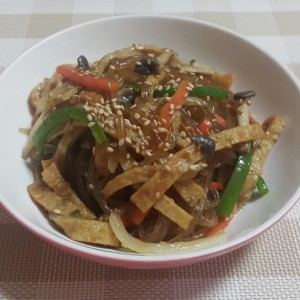 Making fish cake japchae with ingredients in the fridge4.86(77)
Making fish cake japchae with ingredients in the fridge4.86(77)
-
- Bibimbap Recommended recipe
-
-
1
 Let's mix it with easy ingredients! Lettuce bibimbap4.94(18)
Let's mix it with easy ingredients! Lettuce bibimbap4.94(18) -
2
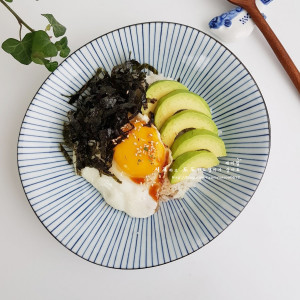 Avocado and egg bibimbap4.94(50)
Avocado and egg bibimbap4.94(50) -
3
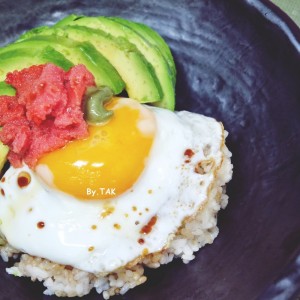 Avocado pollack roe bibimbap. Make it simple.*5.00(11)
Avocado pollack roe bibimbap. Make it simple.*5.00(11) -
4
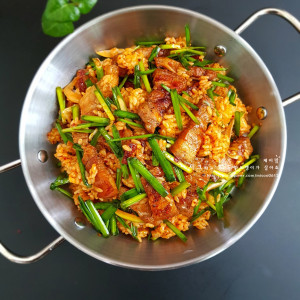 Grilled pork belly with chives and bibimbap5.00(19)
Grilled pork belly with chives and bibimbap5.00(19)
-